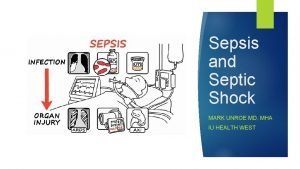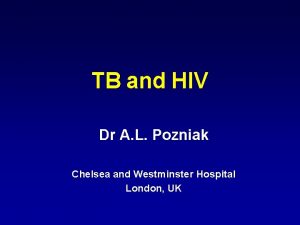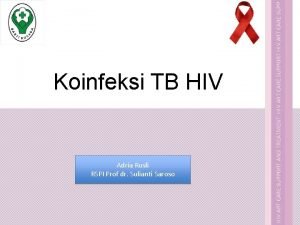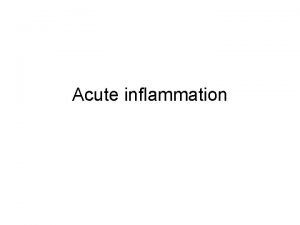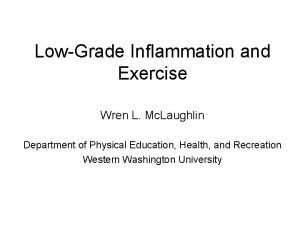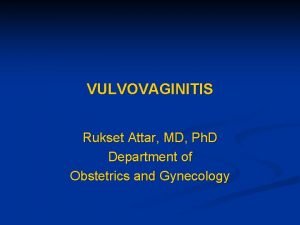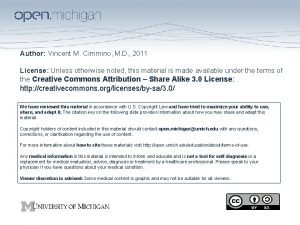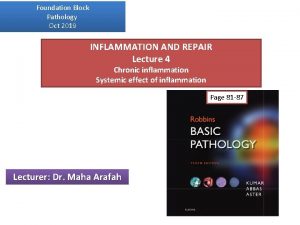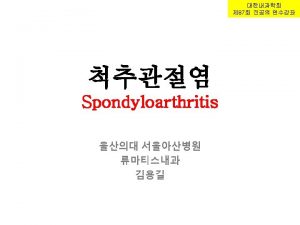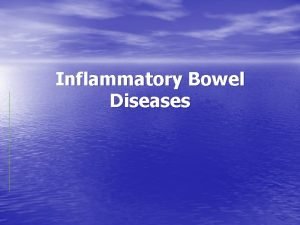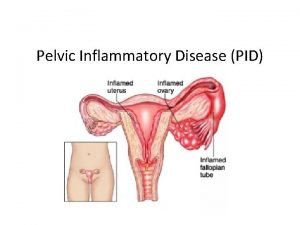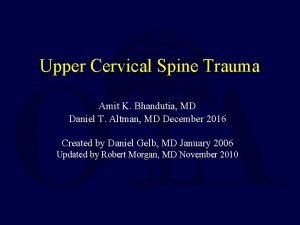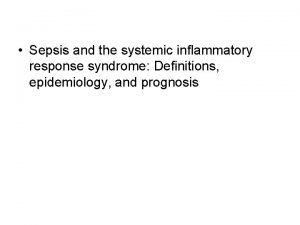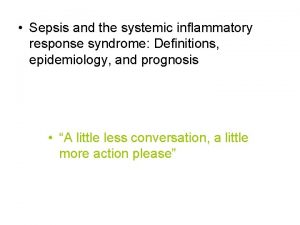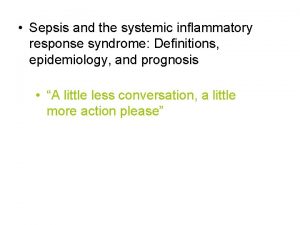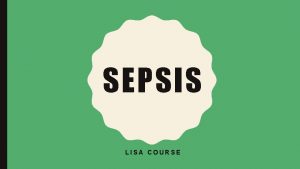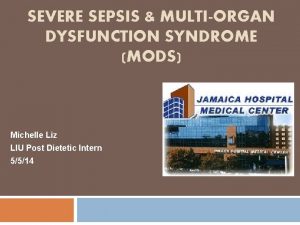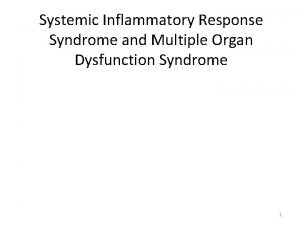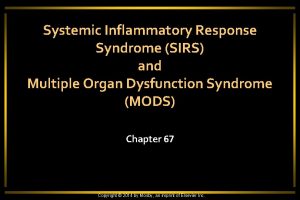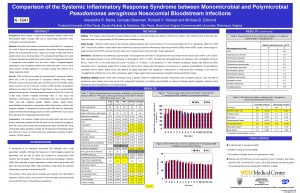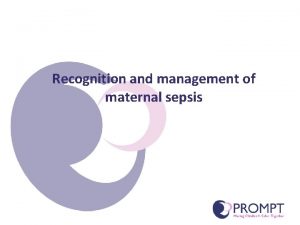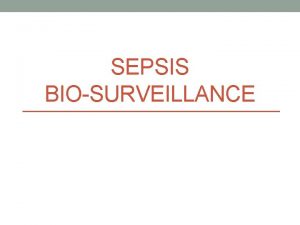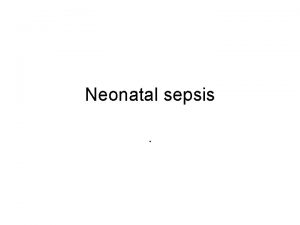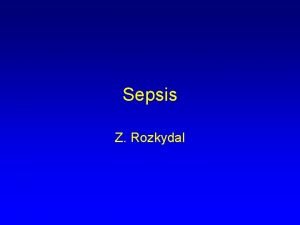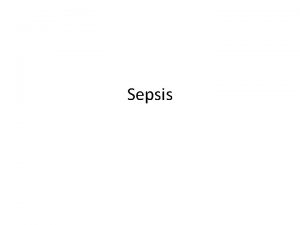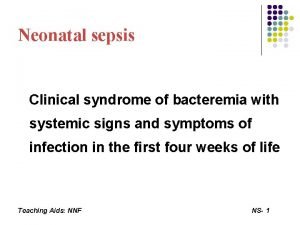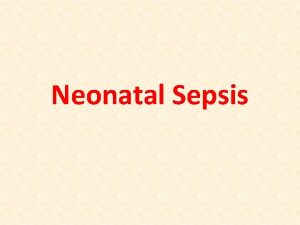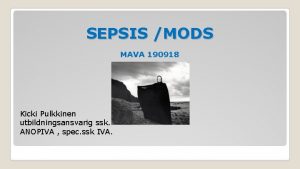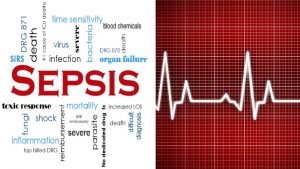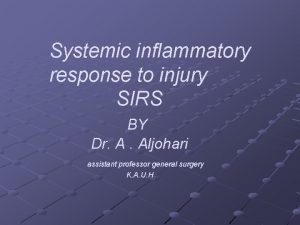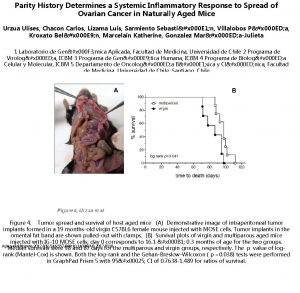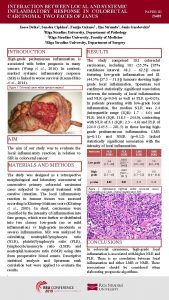Systemic Inflammatory Response Syndrome MODS Sepsis Dr Amit

























- Slides: 25

Systemic Inflammatory Response Syndrome, MODS, Sepsis Dr Amit Gupta Additional Professor Dept of Surgery

Infection Presence of organisms in a closed space or location where not normally found Infection

SIRS: Systemic Inflammatory Response Syndrome A clinical response arising from a nonspecific insult manifested by 2 of the following: • Temperature: 38°C or 36°C • HR: 90 beats/min • Respirations: 20/min • WBC count: 12, 000/m. L or 4, 000/m. L or >10% immature neutrophils

Sepsis: More Than Just Inflammation Sepsis: • Known or suspected infection • SIRS criteria

Severe Sepsis: Acute Organ Dysfunction • Severe Sepsis = Sepsis with signs of acute organ dysfunction in any of the following systems: • Cardiovascular (septic shock) • Renal • Respiratory • Hepatic • Hemostasis • CNS • Unexplained metabolic acidosis

Sepsis: A Complex Disease

Septic Shock: Sepsis induced with hypotension despite adequate resuscitation along with the presence of perfusion abnormalities which may include, but are not limited to lactic acidosis, oliguria, or an acute alteration in mental status

Multiple Organ Dysfunction Syndrome (MODS): Presence of altered organ function in an acutely ill patient such that homeostasis cannot be maintained without intervention

Infection Inflammation Physiologic Biochemical Severe Sepsis Specific Organ Severity

Predisposition • Pre-existing disease • Cardiac, Pulmonary, Renal • HIV • Age (extremes of age) • Gender (males) • Genetics • TNF polymorphisms (TNF promoter high secretor genotype)

Response Physiology • Heart rate • Respiration • Fever • Blood pressure • Cardiac output • WBC • Hyperglycemia Markers of Inflammation • TNF • IL-1 • IL-6 • Procalcitonin • PAF

Organ Dysfunction • Lungs Ø Adult Respiratory Distress Syndrome • Kidneys Ø Acute Tubular Necrosis • CVS Ø Shock • CNS Ø Metabolic encephalopathy • PNS Ø Critical Illness Polyneuropathy • Coagulation Ø Disseminated Intravascular Coagulopathy • GI Ø Gastroparesis and ileus • Liver Ø Cholestasis • Endocrine Ø Adrenal insufficiency • Skeletal Muscle Ø Rhabdomyolysis

Sepsis: Defining a Disease Continuum Infection/ Trauma SIRS A clinical response arising from a nonspecific insult, including 2 of the following: • Temperature ≥ 38 o. C or ≤ 36 o. C • HR ≥ 90 beats/min • Respirations ≥ 20/min • WBC count ≥ 12, 000/mm 3 or ≤ 4, 000/mm 3 or >10% immature neutrophils Sepsis Severe Sepsis SIRS with a presumed or confirmed infectious process

Sepsis: Defining a Disease Continuum Infection/ Trauma SIRS Sepsis Severe Sepsis Shock • Sepsis with ≥ 1 sign of organ failure – Cardiovascular (refractory hypotension) – Renal – Respiratory – Hepatic – Hematologic – CNS – Unexplained metabolic acidosis

Pathogenesis of SIRS/MODS Preoperative Illness Trauma or Operation Tissue Injury optimal oxygen delivery and support Recovery Excessive Inflammatory Response Inadequate Resuscitation SIRS/MODS

Initiation of Inflammatory Response From Wheeler & Bernard, NEJM 1999

Homeostasis is unbalanced in Severe Sepsis Carvalho AC, Freeman NJ. J Crit Illness. 1994; 9: 51 -75; Kidokoro A et al. Shock. 1996; 5: 223 -8; Vervloet MG et al. Semin Thromb Hemost. 1998; 24: 33 -44.

Coagulation and Fibrinolysis Bernard, GR. NEJM 2001; 344; 10: 699 -709

Pathogenesis of SIRS/MODS Preoperative Illness Trauma or Operation Tissue Injury optimal oxygen delivery and support Recovery Excessive Inflammatory Response Inadequate Resuscitation SIRS/MODS

Regulation of oxygen delivery Normal Abnormal Cardiac output BP=CO * SVR Cardiac Output regional distribution Intra Organ Distribution Microcirculation QO 2 = Flow * O 2 content

Oxygen Delivery • Delivery: Demand mismatch • Diffusion limitation (edema)

Oxygen Consumption H+ H+ I Q NADH + H+ H+ Cytc III H+ IV 1/2 O 2 + H+ H 2 O NAD+ • Pyruvate Dehydrogenase (PDH) activity decreased • Decreased delivery of Acetyl Co. A to TCA cycle • Mitochondrial dysfunction H+ ADP + Pi ATP

Severe Sepsis: The Final Common Pathway Endothelial Dysfunction and Microvascular Thrombosis Hypoperfusion/Ischemia Acute Organ Dysfunction (Severe Sepsis) Death


Components: • Early Recognition • Early Goal-Directed Therapy • • Monitoring Resuscitation Pressor / Inotropic Support Steroid Replacement Recombinant Activated Protein C Source Control Glycemic Control Nutritional Support • Adjuncts: • Stress Ulcer Prophylaxis, DVT Prophylaxis, Transfusion, Sedation, Analgesia, Organ Replacement
 Quick sofa escala
Quick sofa escala Immune reconstitution inflammatory syndrome
Immune reconstitution inflammatory syndrome Immune reconstitution inflammatory syndrome
Immune reconstitution inflammatory syndrome Remus ktm 790 adventure
Remus ktm 790 adventure Bmw r nine t mods
Bmw r nine t mods Fxbb mods
Fxbb mods Mods tablosu
Mods tablosu Triumph thruxton mods
Triumph thruxton mods Pus smear
Pus smear Lecucytosis
Lecucytosis Pro and anti inflammatory
Pro and anti inflammatory Desquamative inflammatory vaginitis
Desquamative inflammatory vaginitis Treatment of inflammatory breast cancer
Treatment of inflammatory breast cancer Inflammatory cells
Inflammatory cells Modified schober's test
Modified schober's test Post inflammatory erythema
Post inflammatory erythema Ulcerative colitis vs crohn's
Ulcerative colitis vs crohn's Consestence
Consestence Pelvic girdle pain
Pelvic girdle pain Pelvic inflammatory disease men
Pelvic inflammatory disease men Amit sahai
Amit sahai Amit bhandutia
Amit bhandutia Amit dio egizio
Amit dio egizio Amit tamrakar
Amit tamrakar Col 106 amit kumar
Col 106 amit kumar Amit idg780
Amit idg780
